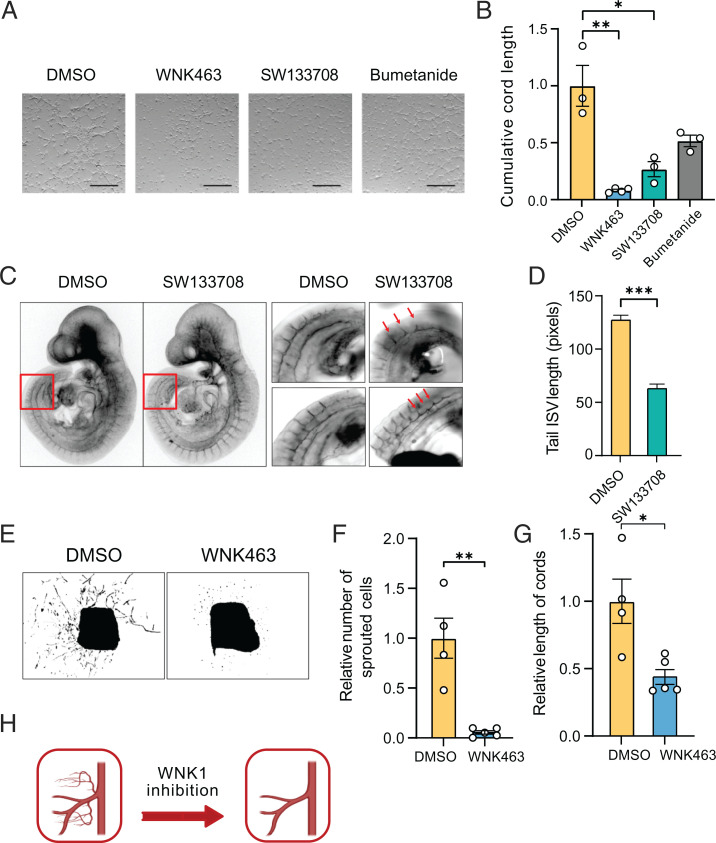Fig. 1.
WNK activity is required in the endothelium for angiogenesis. (A) Representative bright-field images of cord formation in HUVECs treated with DMSO, WNK463 (1 µM), SW113708 (10 µM), or bumetanide (20 µM); Scale bar, 1 mm. (B) Corresponding quantification of the images in A shows decreased length of cords in HUVECs treated with WNK463 or SW113708 for 4 to 6 h compared with DMSO control; n = 3. Only partial decrease in the cord length was seen with bumetanide treatment (20 µM). (C) Representative confocal images show PECAM staining in embryos treated with SW113708 (10 µM) or DMSO control applied to E9.25 embryos for 6 h in a BTC Precision chamber. (D) Corresponding quantification shows reduced length of intersomitic vessels (ISV) with SW113708 treatment compared with DMSO control; n = 4 (n = 29 images with DMSO; n = 58 images with SW133708). (E) Simulated bright-field images show sprouting cord formation by day 6 of DMSO and WNK463 (1 µM) treatment of mouse aortic ring slices. (F) Corresponding quantification shows decrease in the number of sprouted cells and (G) relative length of cords from the aortic explants in WNK463 treatment compared with DMSO control; n = 5. (H) Model depicting reduced angiogenesis upon WNK1 inhibition. Graphics created with BioRender.com. Data are represented as mean ± SE, analyzed by unpaired two-tailed Student’s t test or one-way ANOVA. *P < 0.05, **P < 0.005, ***P < 0.0005.

